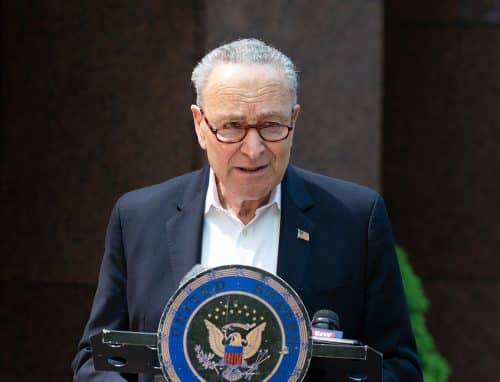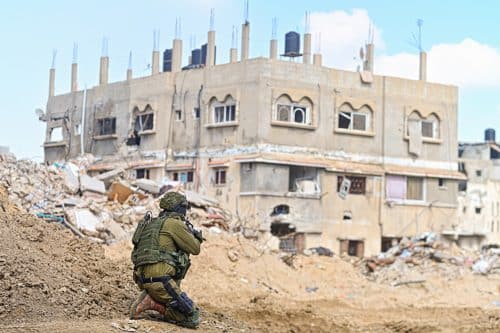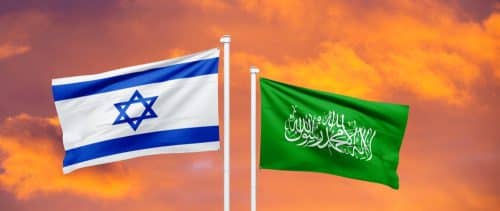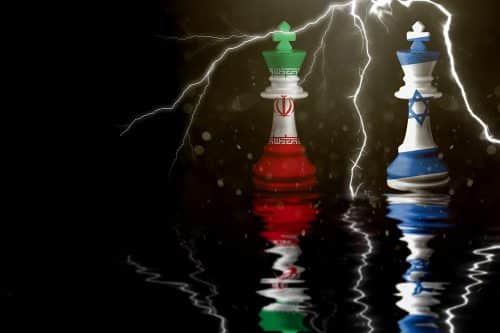Today it’s clear to everyone – the situation in Gaza will never go back to how it was. Now, we need to ask ourselves which situation we can hope for, and what we need to do in order to make it happen.
Every country has a basic contract with its citizens: The citizens follow the laws and the State protects their lives and their personal welfare. The State of Israel breached its contract with the residents of the Gaza Envelope by permitting the creation of an army of terror with operational capabilities which wouldn’t shame the armies of established states. This breach of contract was unintentional, of course, but it occurred as a result of faith in Israel’s intelligence abilities, despite a history paved with examples of intelligence failures.
This overly confident reliance on intelligence capabilities can no longer form the basis for the contract. After the horrifying massacre we experienced on October 7th, the State of Israel can never again permit terror to gain power in the Gaza Strip, or believe that intelligence will provide the solution. Given this understanding, the government of Israel has set out clear aims for the war; the destruction of the reign of Hamas in Gaza and the decimation of the military abilities of both the Hamas and the Islamic Jihad. In order to achieve these targets, the IDF will need to conquer the Gaza Strip, and continue to clean out the functioning terror cells in an operation which looks like it will last several months. So what happens once we’ve achieved these goals set out for the war? The State of Israel must construct a clear strategy.
THE THREE CONDITIONS WHICH WILL FORM THE CONTRACT FOR THE DAY AFTER
As with any military or political thought, victory on the Gaza front will also need to begin with a single wish; which conditions will ensure the existence of the State of Israel and the security of its citizens for generations to come. Based on the answer given, it will become possible to examine political solutions which will depend on the conditions set.
The IDSF are currently carrying out an in-depth strategy analysis which will draft a solution to the problem. In our opinion, three conditions are necessary in order to ensure that after the terror infrastructures are dismantled that no new ones can rise again in Gaza.
First, let’s take a look at the border between Gaza and Egypt. We need to maintain complete control over that border. When Israel did not control that border, knowledge, money, weapons and manpower flowed massively and endlessly into Gaza. This is precisely what converted Hamas from a small terror organization into the army we see today. It’s important to note that control over the border with Egypt is not merely a matter of controlling the Philadephi Corridor, but must also include control over the area deep within the Gaza Strip, which will utterly isolate Gaza from Egypt. The importance of this area is similar to the strategic concept in the Jordan Valley, where we also hold control over the border with a country with whom we have a peace agreement. It’s true, in the Jordan Valley we’re also dealing with smuggling problems, but it would be much greater if we didn’t have control.
Second, Israel must ensure that it has freedom to operate in Gaza in order to destroy terror infrastructures. In order to understand the significance of this condition, we need to recall the initial stage of the Oslo Agreements of 1994, which were known as “Gaza and Jericho first”. In other words, transferring the cities to the control of the Palestinian Authority. Within this framework, the IDF stopped fighting terror in these areas, and left this crucial task in the hands of the PA. The result, as we know, was that within these cities significant terror infrastructures rapidly took hold. The lesson we learned from this historical error was that we are obligated to continue operating militarily in areas with terror potential. In other words, even after the conquest of Gaza and destruction of the terror infrastructures, the IDF must maintain complete freedom of operation on a daily basis throughout the Gaza Strip.
Finally, the third condition for preventing the strengthening of terror in Gaza, a condition linked to the second condition, is settlement. As with all regions of the country since the Second Aliyah, military and political control can only develop in areas where there is civilian settlement. The reason for this is not only that settlement and movement along arteries creates a constant state of security but also that only significant civilian settlement provides legitimation for a military presence. This, for example, is the difference between Judea and Samaria and South Lebanon. In Judea and Samaria there is an active, living texture which, on the one hand, facilitates routine and on the other, there is a military presence, while in South Lebanon the arteries were left to the terror organizations and the IDF had no clear justification to continually act and prevent terror.
GAZA 2025
Now that we’ve clarified the basic conditions for ensuring the safety of Israel’s citizens, we need to ask ourselves the political question. What political horizon lies before these conditions we’ve set out for Israel’s security? Who can take over control of the lives of Palestinians in Gaza and what future can we offer citizens in the Gaza Strip?
As of yet there is no answer for this. Examining similar decisions from the past, we can only point to errors. We mustn’t return to the mistake made with Fatah and the establishment of the PA, who are currently in stages of collapse, and who never really managed to take control on the ground. In order to find a solution to this question, Israel’s government will need to think out of the box.
Discourse in Israel generally relies on the view that a political vision needs to come at the cost of protecting our defences. It’s a mistake to believe this. We need to reach a political solution from a place of security and strength, and out of a sense of commitment to the citizens of Israel first and foremost. The relevant foundational principles for a political solution in Judea and Samaria are not very different from those which would work in Gaza.
The IDSF consolidated four political plans, including the Palestinian Emirates plan, a Palestinian-Jordanian Confederacy plan and a new state plan, rooted primarily in the existence of these three conditions in Judea and Samaria. Now, it’s up to the State of Israel to think again about the Gaza Strip.





